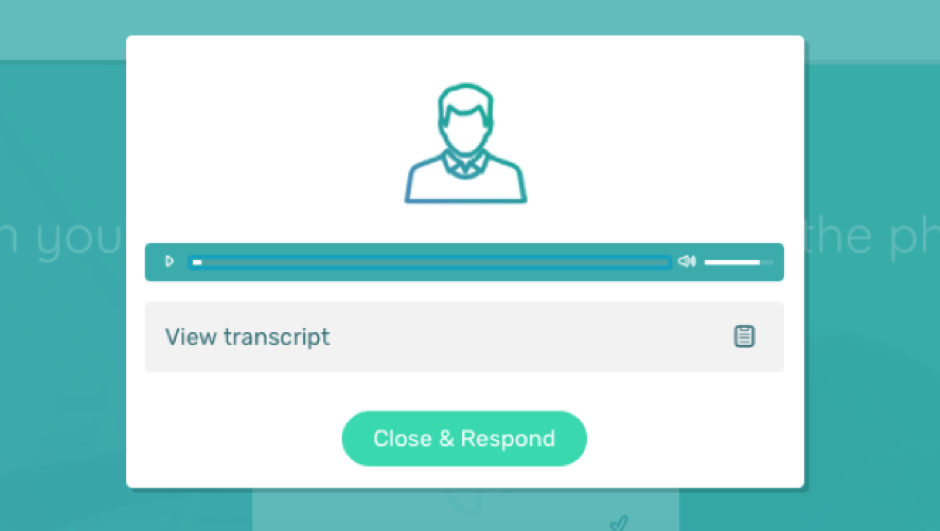6 sound strategies for using audio in your elearning
4 minute read
Audio can be a useful tool to add life to and explain your content. However, too much audio in the wrong place could make your content sink, not sing. In this article, we’ll show you some great ways to use audio and share inspiring demos of where audio rocks.

Audio can be cheap to produce and quick to make. But that doesn’t mean we should throw it in anywhere or everywhere. In fact, badly done audio can damage the learning potential of your content. So, if you’re about to hit record and do that voiceover, pause for a second and explore this topic.
Why audio in elearning is important
Audio can bring great things: drama, suspense, pace, intrigue, warmth, brand, excitement, connectivity, guidance, assurance and memorability.
It can also offer an accessible alternative for those with visual impairments, dyslexia or low literacy levels.
When audio in elearning fails
We often see audio used and abused in learning content. When used badly, it has the potential to irritate your audience, distract them, and confuse the working memory –which means less learning.
Clark and Mayer are the kings of scientific research into media and its impact on learning. Their research suggests that the more information in various formats (text, audio, video, animation), the more the learner has to process. If media sources don’t complement one another, or simply repeat one another at different speeds, they confuse the working memory.
You can read up on their cognitive load and dual encoding theories in this article.
5 best practice strategies for using audio in elearning:
1. Use audio to explain complex concepts
Clark and Mayer’s extensive research tells us audio works best with diagrams, conceptual graphics, complex graphics and animations to tell a cohesive story that’s greater than its individual parts.
So, if you’re working with complex content, or have an audience who are often on the move and would benefit from consistent audio complemented by glances at imagery, this option is a great fit.
For example, check out The Guardian’s content, which explains quantum theory and black holes simply by using audio and animated visuals that complement, not collide.
2. Use audio to tell a story and immerse learners
People learn from people, and people love stories – especially when media is used to enhance the story’s authenticity. Think about interviewing experts and peers and have their voice be part of the learning experience, or using audio to immerse learners in a realistic simulated scenario.
This example of audio-driven online training helps sales staff learn by practicing phone calls in a risk-free simulated environment. Using audio offers a quick and inexpensive way to create an immersive scenario-based training experience.

Your audio can of course be complemented by relevant visuals, from a photo story to a fully illustrated animation. By using a real voice alongside relevant content, you can tell a story in an authentic way.
3. Use audio with animation
Combining audio with animation can add richness and reality to case studies, and draw learners into your content.
For example, in this lovely project commissioned by the Open University, professional voiceover is used in animations to hook learners in.
While the audio isn’t needed to explain the points (unlike the first example in this module), the audio brings richness and reality to the story – drawing learners in and increasing engagement with the poll questions that follow.

4. Make sure sound quality is good
The social media boom means we’re all used to handling lower quality audio than before. Recording audio on a smartphone, for example, is perfectly acceptable – and there are plenty of apps out there to help you.
But there are still some basic quality standards to make sure you meet. Find a quiet space with a closed door to avoid background fuzz and indecipherable voices, and listen back to all your clips to make sure the audio volume is relatively consistent through the clip.
5. Consider if you need outside help
Good audio isn’t just about the technical side; writing killer interview questions or realistic dialogue is a skill in itself. So, if you’re all set to script a story or scenario to be delivered in via audio, consider seeking expert input.
If you’re going it alone then make sure you read it out loud, get feedback from others and test it out with end users. Does it sound natural?
Is audio right for your audience?
Understanding your audience needs is key to deciding what type of learning experience you should create. At the start of any new elearning project, make sure you capture your audience needs before you start conceptualizing your ideas. These two guides will help:
- Guide to capturing audience needs in your project plan
- Guide to conceptualizing your elearning ideas
Want to improve your learning design skills? Register for our Masterclass training series. Learn more about using audio, animation, social polls and styles to create better elearning for your organization.



